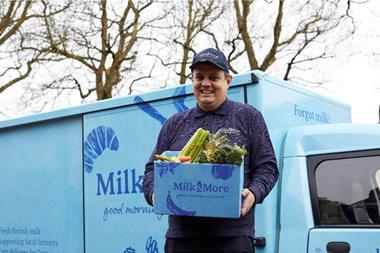
Diageo’s recent profit warning has once again highlighted the risks associated with poor visibility levels on inventories across different distribution channels and geographies.
In the case of Diageo, the profit warning was associated with a lowered expectation of a significant 20% decline in Latin America sales in the first half of its fiscal 2024 period. That was due to retailers pausing orders, having built up inventory levels too much. It means Diageo has had to spend more on promoting products to shift excess stock, which is also weighing on margins.
The shortfall in sales has been driven by exceptional demand patterns over the past few years, especially in the wake of covid. These were assumed by some management teams to be more sustainable than has been the case. Specifically in both Latin America and North America, stimulus cheques boosted consumer demand for some high-end fmcg categories such as spirits, but this is now fading fast. This change in demand inevitably needs to be reflected in retailer and distributor stock levels. This issue has been a headache for many fmcg companies this year and could still remain challenging.
Investors have been trying to figure out when destocking might come to an end. It has proven longer-lasting for several end categories including spirits, high-end cosmetics and ingredients, and has been a particular feature in certain geographies such as North America, Latin America and China this year. In Europe, interestingly we have heard much less about this topic.
Estée Lauder is another company suffering from destocking. It shipped very significant cosmetic inventory into the Chinese shopping island of Hainan in 2021/22. However, government restrictions on trader (daigou) reselling as well as generalised weakness in the Asian travel retail sector has resulted in sharp destocking and several reductions to Estée’s earnings guidance. L’Oréal has also been impacted in the region for similar reasons.
Brand values, especially in categories such as premium skincare, can potentially be eroded in the eyes of consumers – especially if they have become accustomed to buying on discount. Management teams may find building back a premium brand price architecture becomes much harder after these types of events.
For ingredients players focused on areas such as flavours, fragrances and sweeteners, supply chain constraints in 2021 and 2022 meant some fmcg customers opted to move to ‘just in case’ inventory management from ‘just in time’. By definition this shift requires more stock. As supply chain constraints have eased, manufacturers have significantly reduced stock levels, which has been a headwind for ingredients suppliers such as Tate & Lyle and Givaudan. And particularly Croda, which has had two profit warnings on this front in 2023.
Another category to come under pressure from destocking is the plant-based protein market, especially in the US. ADM reported inventory reductions and a softening of consumer demand that is likely to persist into next year. As a result, action was required on its factory footprint as it seeks to better match supply to the demand environment.
Read more: Are the wheels falling off for plant-based?
The other factor encouraging destocking across supply chains is higher interest rates. Funding working capital has become much more expensive, meaning tighter inventory management has moved up the agenda for CFOs. This has compounded destocking pressure across distribution channels. So long as rates remain high, this is likely to remain the case as companies prioritise cashflow generation. For example, Nestlé in 2022 saw a CHF3bn working capital outflow due in part to higher inventory safety stocks. Efforts to reduce this in H1-23 led to a material rebound in cashflow.
The question for many is whether the Diageo warning was company-specific, or whether it is an omen that destocking pressures still need to wash through elsewhere. The narrative for many companies is that destocking pressures are easing, but if this is the case, Diageo was a big outlier. Staples is not a sector that investors own for negative surprises such as these.
Looking forward, as pricing rolls over for the big fmcg players, volume/mix becomes crucial. If volumes recover on the back of innovation fuelled by higher advertising spend, this might mean inventory levels find a floor and the comparison base looking into 2024 should be undemanding.
However, this whole episode is a salutary lesson for the industry: fast-changing consumer trends make it imperative for supply chains to respond quickly and without missing a beat. The mistakes of 2023 cannot be repeated next year.



















No comments yet